Rectory Cottages & Rectory House, Martham
Many centuries ago, when churches were first founded tithes were an important part of the income of the church. Each parish priest was responsible for the collection of tithes in kind i.e. one tenth of the produce of the land which was not only crops but animals like lambs which were deemed to be a product of grazing and therefore of the land. Storage was obviously needed and so tithe barns came into existence. Martham had a huge tithe barn formerly just to the west of Rectory Cottages, Cess but it no longer exists. It must have looked like the one at Hemsby that still exists today and can be seen down Hall Road.
Priests were appointed by patrons (normally landowners) who held the privilege of appointing them, this was called an advowson. Priests became known as Rectors as they received part of the income of the tithes.
After monasteries came into existence they needed support too. Some people who held an advowson decided that it would be important to have prayers said regularly for the saviour of their souls. In 1224 Matthew de Gunton gave the advowson of Martham to Norwich Cathedral Monastery on the understanding that the monks would pray for his soul. From that time onwards because the Cathedral had the advowson they were also entitled to the tithes so the area where the tithes were stored became known as Rectory Farm. That included quite a lot of land and eventually someone was allowed to build a house on some of it and that became known as Rectory House, thus Rectory House and Rectory Farm covered the same area of land, plus more.
Of course, Martham had to have a priest and so the Cathedral appointed a Vicar. He had to have an income so he was given the small tithes. The great tithes, also known as the ‘rectorial tithes’, were payable to the rector and generally comprised the tithes from corn, grain, hay and wood while the small tithes, also known as the ‘vicarial tithes’, were payable to the vicar and comprised all other tithes like animal husbandry and the profits from a man’s labour.
The house a vicar lived in was obviously called the Vicarage. Some parts of Martham’s former Vicarage date back to the 16th century. In recent times when Benefices (groups of parishes) were created the priest in charge of it was called a Rector. It is confusing that an old name has been re-used but the meaning is quite different from what it originally meant.
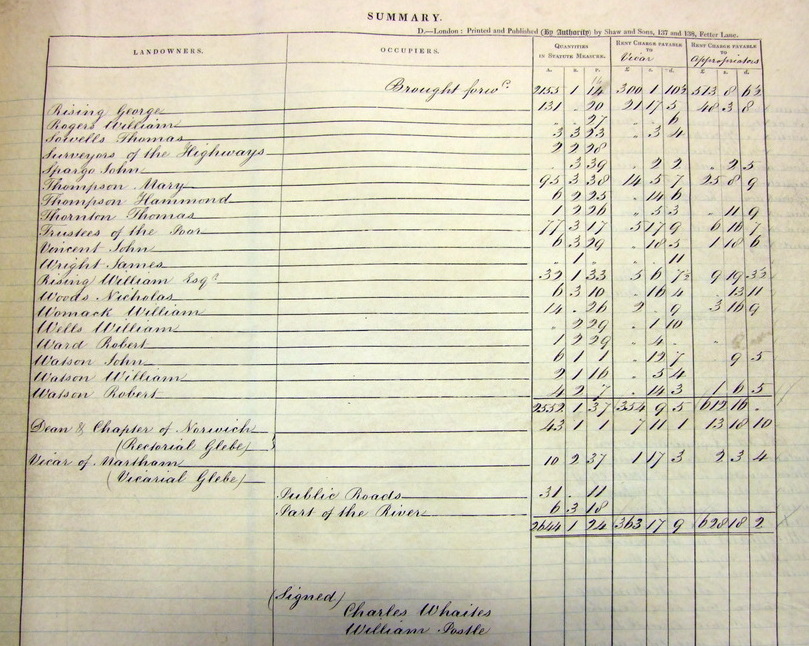
The 1842 Martham Tithe Award converted payments in kind to money payments which were still split into those payable as great and small tithes as shown on the left summary page of the 1842 Award which gives the total payable to the Dean & Chapter of Norwich Cathedral and to Martham Vicar and are what classic novels like to call ‘The Living’.
Another agreement in the 1860’s gave more details about glebe land associated with the Church in Martham let by the Dean and Chapter and provided a map which is shown below. The plot numbers are based on the 1842 Martham Tithe Award. Plot numbers 108 to 112 and 136 were leased to Mary Francis, nee Rising, the widow of Thomas Francis (1771-1820) who farmed from West End Cottage, known today as Grange Farm. Plot numbers 572, 631 & 635 were leased to William Rising (1769-1846). Plot 110 is where Rectory Cottages are now and plot 136 was where Rectory House is now but it had not been built in 1860.
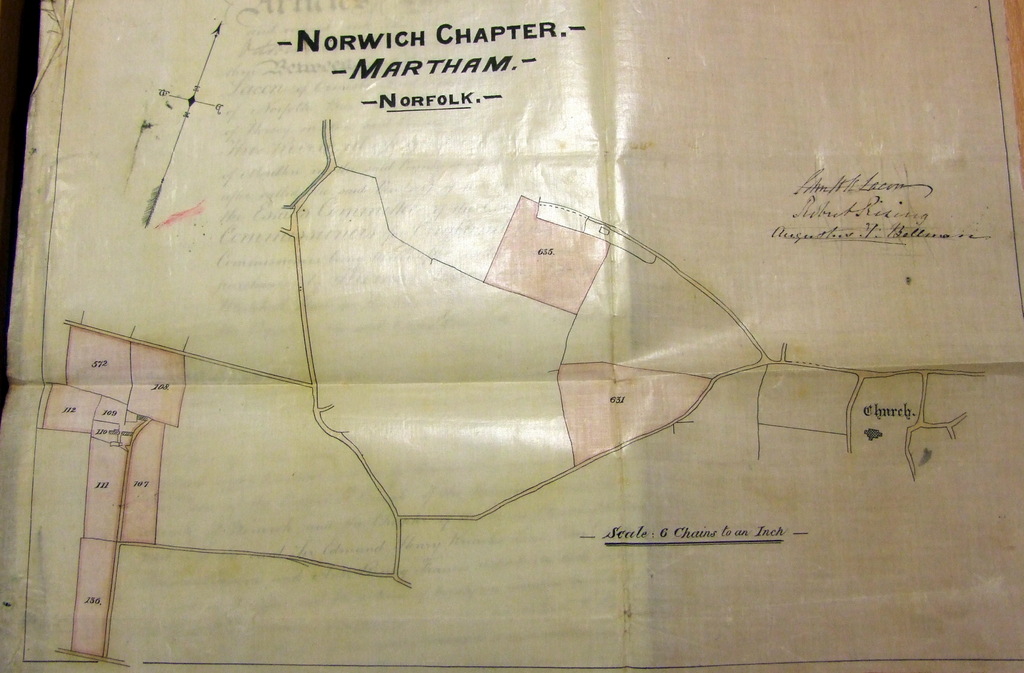
Rectory Cottages, Cess – summary
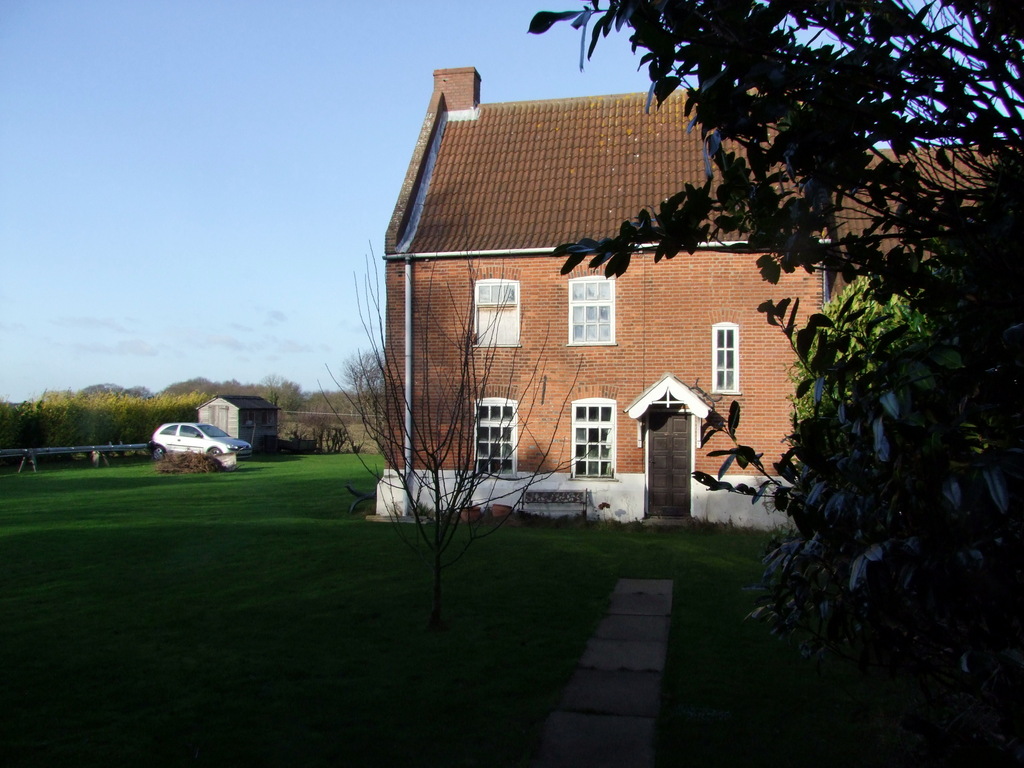
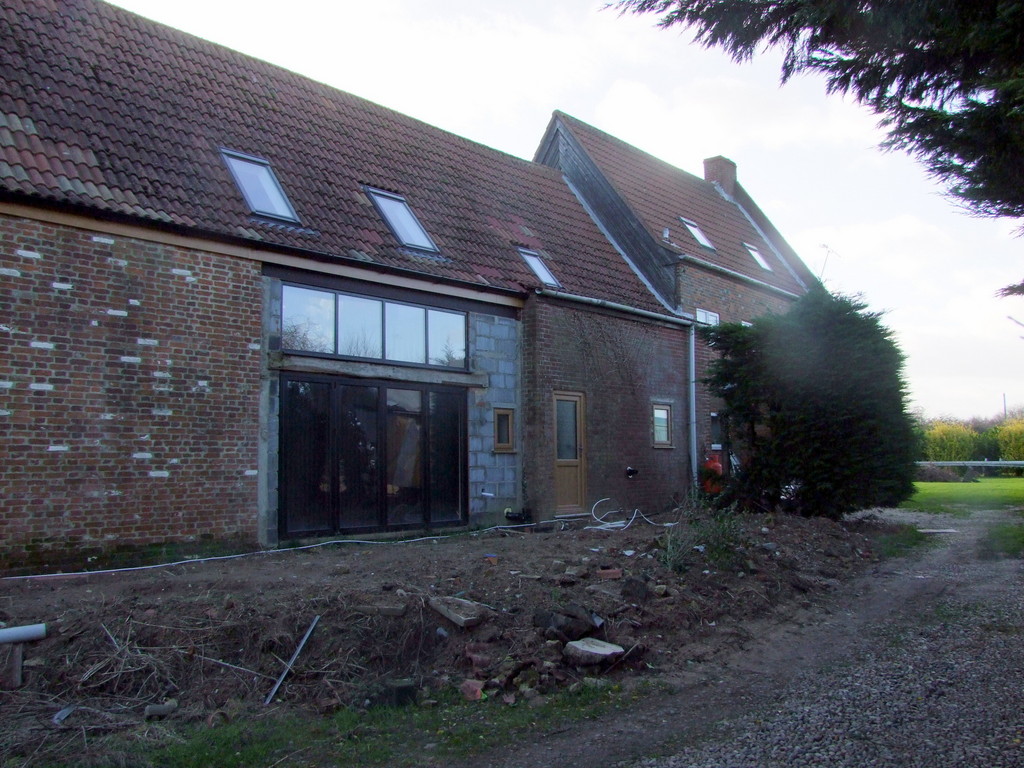
There were two, or perhaps three, Rectory Cottages at Cess dating to the early 19th century. What is now called West Cottage is shown above on the left. For many years the cottage attached to it, now called East Cottage, was semi-derelict having a front but no back. That half, or what may have been two, has now been completely renovated and made into a lovely home by the present owners.
1812. Rectory Cottage buildings as owned by the Dean and Chapter of Norwich are shown outlined in red on the Martham Inclosure Award map below. Some of the buildings were probably barns.
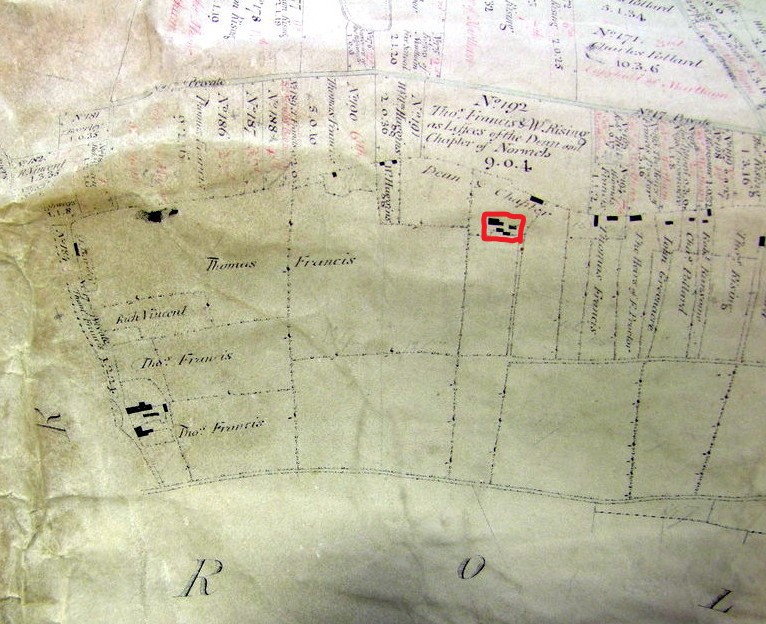
1841 census. There is no named entry for Rectory Cottages in this census but at that time none of the properties listed in Cess had an individual name.
1842. Buildings appear on plot No 110 on the Martham Tithe Award Map. They were owned by the Dean & Chapter of Norwich and farmed/rented by Mrs Mary Francis of Grange Farm.
1851 census. There is one house named as “The Rectory, Cess” in this census but it was uninhabited.
1860. The Glebe Land map shows buildings on plot 110 – see above.
1861 census. There are only two entries in this census named as Rectory Road, Cess that are probably Rectory Cottages. One was occupied by Henry & Sofia Bye and their five children aged from 1 to 12; the other was occupied by John & Emma Beck and their five daughters aged from 3 to 12.
In 1866 a William Haywood (born in 1801) was mentioned in a Norfolk Chronicle newspaper report dated 14th April 1866 as the contact person about the sale of oak trees and as living at The Rectory which would have been one of the Rectory Cottages and not the Rectory next to St Mary the Virgin church. William was a farm bailiff working for Alfred Wiseman who farmed all the surrounding land at the time. (“Rectory House” had not been built in 1866).
1871 & 1881 censuses. There are no properties actually named as Rectory Cottages in these census returns.
1891 census. There were two entries for Rectory Cottage:
One was occupied by Henry (32) & Ann (32) Hill plus their two children Ellen (8) & Henry (1). Henry Snr. was a farm labourer.
The other was occupied by James Fane (27) & Sarah Elizabeth (28) Turner plus their two sons John (b1889) & James (b1891). James Snr. was a farm labourer.
1901 census. There were two entries for Rectory Cottages.
One was occupied by Frederick (45) & Ellen (37) Jones plus their two sons Frederick (13) & Sidney (10) plus their daughter Edith aged 8. Frederick Snr. was a fisherman.
The other was occupied by the same James Fane Turner & his wife Sarah Elizabeth plus their three children John, James and Laura as in 1891.
1911 census – confusingly there were three different entries for families living at “Rectory” as follows:-
Sarah Ann Turner lived at what was listed as “Rectory” but was probably the same Rectory Cottage as in 1891 & 1901. Her husband’s name had been written on the form but then deleted as it is believed he was at sea. The entry said she had been married for 23 years and had five children who were all alive. She was the sister of Benjamin Goose who lived next door.
Also listed as living at “Rectory” were Benjamin & Mary Goose plus their son Benjamin junior.
Also listed as living at “Rectory” were Benjamin (43) & Emily (38) Gallant plus their two sons Maurice (7) and Cecil (4).
1937-1939. Reginald Shreeve and his wife Irene lived at Rectory Farm, Cess. He was Bailey’s market garden foreman. Born on 12th February 1906. His mother also lived there.
Rectory House, Repps Road, Martham – summary
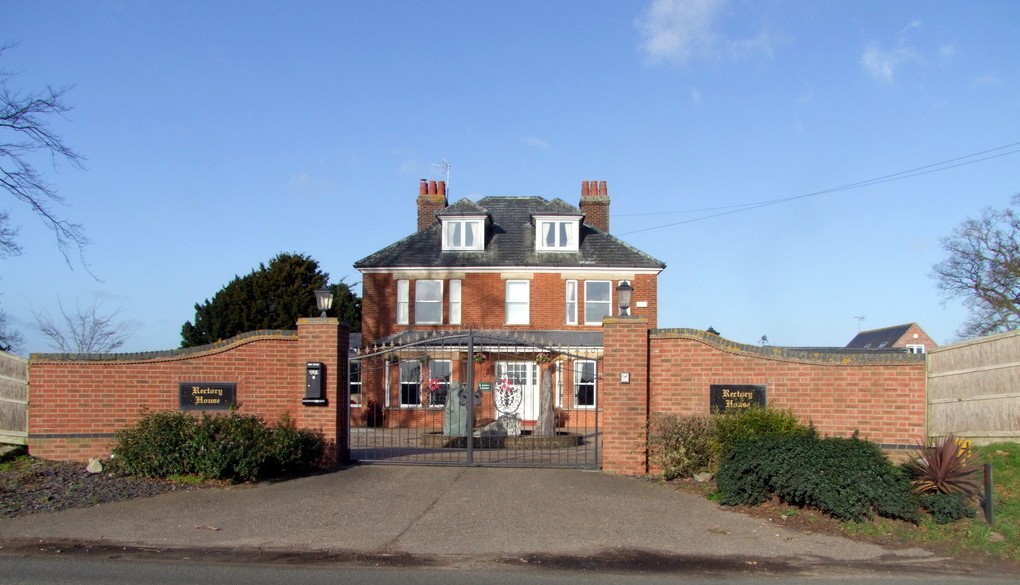
Rectory House on Repps Road is a substantial Edwardian house built using locally made bricks called Martham reds and has a natural slate roof. It was built in around 1902 by local wheelwright and builder Henry Futter. Henry was born in Martham in 1861 and married Arletta Skoyles in 1880. You can read more about him by clicking on his name. Despite its name the house has never been a rectory. The house originally had seven bedrooms, two of which were servants quarters in the attic. The house is set on a small rise and as a result the well had to go down over 70 feet (21 meters) to reach a water supply. Water was then pumped up to a tank in the roof to serve the house.
Rectory House is not listed in the 1901 census but is thought to have been built very soon afterwards. By 1911 it had been built and is listed in the census compiled that year. *Arthur Wiseman (50), and his sisters Gertrude (53) and Mary (59) lived there and they also had a live-in domestic servant called Eliza Hollis aged 17 from Thurne.
Between 1912 and 1937 Arthur Wiseman was mentioned in various business directories as living at The Rectory, Repps Road, Martham as a retired farmer.
In 1939 Arthur Wiseman lived at the house with his spinster sister Gertrude plus two domestic servants:- Alice Allen (born 12.10.1904) and Millicent Clark (born 7.5.1922). There are more details about Arthur* below.
1955 – An Edward Walter Taplin was recorded as dying at Rectory House, Repps Road on 10th February 1955. He was born London in 1874 and is buried at St Mary the Virgin. He was a former brewer at Great Yarmouth.
1965 – Local historian Ann Meakin tells me that Mr & Mrs Seabert lived in the house in 1965. He was an architect in Great Yarmouth and they later moved to The Green at Martham. They sold the house to local businessman Bob Spinks who built the conservatory on the west side of the building.
*Arthur WISEMAN
Arthur was born on 20th December 1860 in Norwich. His parents were Alfred Mabbott Wiseman & Thirza, nee Hayles. His father was a successful draper at Earlham Road, Norwich. The family moved to Grange Farm, Repps Road when Arthur was only one and his father became a gentleman farmer there. Arthur had five siblings, namely: Alfred (1850-1882; Mary (1851-1937); Charles (1853-1920); Helen (1855-1927) and Gertrude (1857-1942).
Arthur was baptised on 25th December 1867 at St Mary the Virgin, Martham and grew up living at Grange Farm. By the time he was 20 he had already branched out on his own and lived with his sister, Mary, at Hall Farm Sloley, near North Walsham where he was an agent for a manure supplier. He quickly progressed to farming and stayed there with his sister until after 1891 when they had two live-in servants at Sloley. The wider family farmed hundreds of acres of land and were well off by the standards of the day. His father farmed 358 acres of land in Martham from Grange Farm where he employed 12 men and 4 boys.
The census of 1901 tells us that Arthur and his sister had moved back to Martham to live with their parents but they had moved up in the world still further and were renting and farming the Martham House estate. The estate had been inherited by Rev. Benjamin Howes Rising (1827-1902) who was a vicar and lived away at The Vicarage, Morton, Staffordshire with his family and so rented out the estate to the Wiseman family. In 1901 Arthur’s father was 78 and so may have needed his son’s support in managing the estate.
Arthur’s father died in 1905 at Martham House and his mother died in 1909. This may have triggered a change for both Arthur and his sister Mary because by 1911 they had moved to Rectory House, Repps Road where another of his sisters, Gertrude, also lived with them. They had one live-in servant there and Arthur was listed as being 50 years old and a retired farmer, whilst both his sisters were spinsters.
Arthur was a community man; he subscribed to various community projects including the cleaning out of the main village ponds that were little more than cess pits at the time. He was also a member of Martham Brass Band. In 1929 he was still living at Rectory House and was a beneficiary of Rev. Henry Charles Ash receiving £100 in his will. He was still living at Rectory House when the 1939 Register was compiled by the Government in preparation for the 2nd World War.
Mary, Arthur’s sister, who lived with him for many years at Sloley and Rectory House died there on 22nd April 1937. Arthur died, aged 81, on 30th September 1942 also at Rectory House. His estate was probated in December that year to a value of just over £6,422. His sister Gertrude died at Rectory House less than a month after Arthur on 21st October 1942.
Arthur is buried along with his parents and sisters Mary and Gertrude at St Mary the Virgin graveyard, section B, plot C3 in the family grave marked by a very smart pink granite sarcophagus.
My thanks to Ann Meakin for her help providing information on this topic.